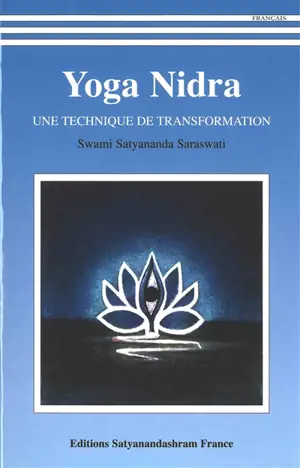Sleep, stress, fatigue, both physical and mental, Yoga Nidra can help with many of our modern challenges. A discreet cousin of meditation, sophrology, and biofeedback, Yoga Nidra is still relatively unknown…
Let’s discover together how this relaxation technique works on both body and mind…
The Origins of Yoga Nidra
Yoga Nidra is a technique developed by Swami Satyananda Saraswati in the mid-20th century, based on ancient Hindu texts called the Upanishads. While its roots are ancient, the method itself is relatively recent.
The primary goal of Yoga Nidra is to teach practitioners how to induce deep physical, mental, and emotional relaxation. That’s why it’s often referred to as the “yoga of sleep.” In reality, one does not actually sleep during Yoga Nidra: it’s a state between sleep and wakefulness, where the body is completely relaxed but the mind remains alert.
Another advantage of this practice is that it’s accessible to everyone. No movement is required, no prior experience, and not even a change of clothing.

How It’s Practiced
Yoga Nidra is always practiced guided, either in a group or alone. You lie on your back on a comfortable surface (but not in bed, to avoid falling asleep), arms at your sides, legs slightly apart.
Sessions usually last 15–40 minutes and follow precise sequences of body awareness, grounding, and visualisation exercises.
After a session, people often feel both their body and mind relaxed, though sometimes they also leave with a burst of energy or enthusiasm. I remember one session with my instructor where I left feeling like laughing out loud. Luckily, there were two of us, and we could share our joy once we left the room.
The Benefits of Yoga Nidra
Yoga Nidra’s benefits are increasingly studied scientifically. Positive effects on the nervous system and sleep have been demonstrated, which lead to numerous benefits, such as:
- Reduced stress
- Better sleep quality
- Physical and mental recovery
- Improved memory and concentration
- Enhanced body awareness (proprioception)
- Lowered blood pressure
- Help managing emotions
- Reconnection with the body
…
Common Questions About Yoga Nidra
Is Yoga Nidra the same as meditation?
It’s true that both practices share many benefits. However, their goals are different: meditation emphasises concentration, while Yoga Nidra focuses on complete relaxation. Yoga Nidra is generally considered more accessible because it is guided and done lying down.
Do you fall asleep during Yoga Nidra?
Sleeping is not the goal, but it can happen, and that’s okay. The idea is to reach a balance between sleep and wakefulness. If you’re too tense during the practice, you remain awake; if you’re too relaxed, or simply very tired, you may drift into sleep.

When is the best time of day to practice Yoga Nidra?
It depends on your personal goals. In general, it’s best to avoid Yoga Nidra at low-energy times: early morning upon waking, after meals, or right before bed.
Want to give it a Try?
I’ve designed a special session for beginners in Yoga Nidra. Grab your headphones… and don’t forget a cozy blanket!
